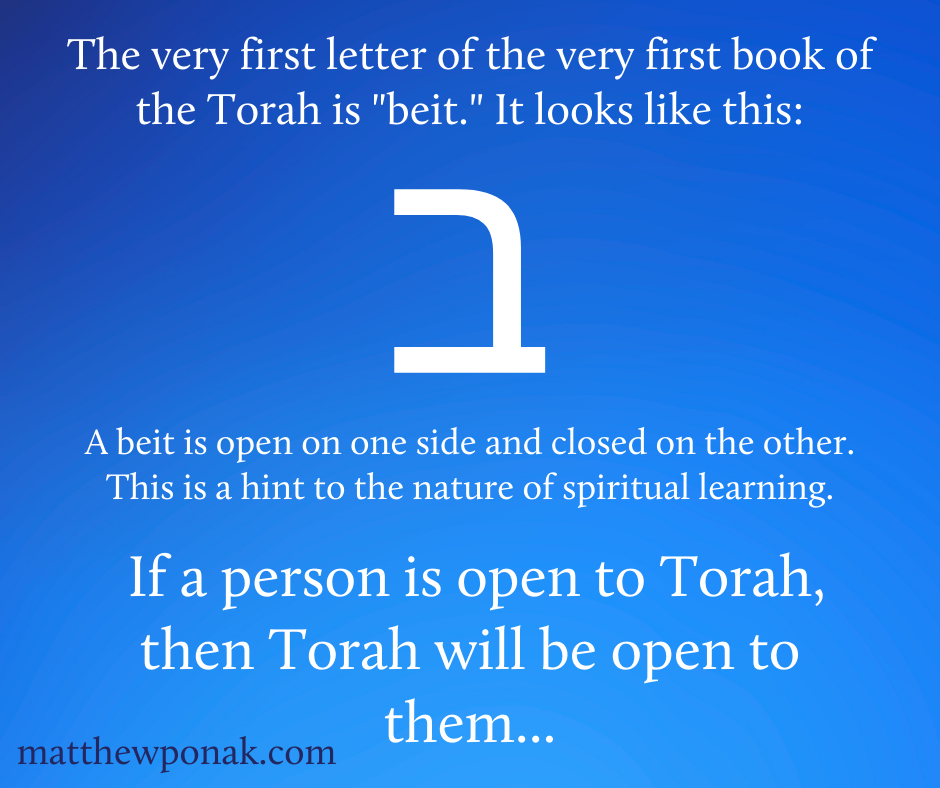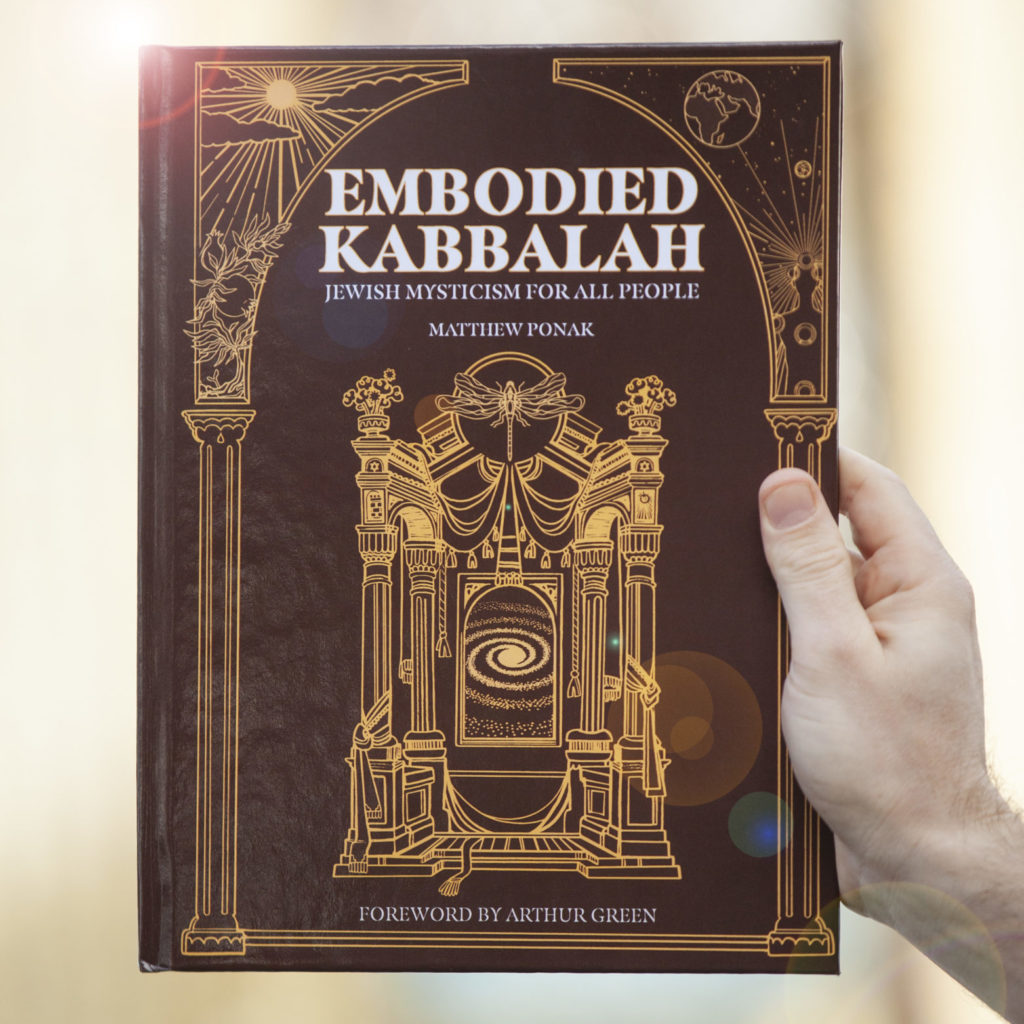Your cart is currently empty!
Why Does the Torah Start with the Letter Beit (ב)?
In the world of Jewish mysticism, every element of scripture holds profound symbolism and significance. The Hebrew alphabet itself has mystical connotations and serves as a gateway to deeper understanding. For centuries, Kabbalah has explored these multifaceted meanings.

Interpreters point out that the first word in the Torah, Bereishit (“In the beginning”) doesn’t start with the first letter, aleph, but rather with the second letter, beit.
Torah is like Intuition
Notice that the letter beit has one closed side and one open side. The thin right wall can be seen as a filter, a “hedge of roses” in the words of 20th century kabbalist Rav Kook. It is semipermeable: both a boundary and a gateway.

This duality suggests that while the wisdom of the Torah is accessible, it also requires our openness and receptivity. Like intuition: if we are open to it, then it is open to us. A fence made of roses lets some things pass through but not everything.
Beit stands guard at the opening of the Torah, revealing its mysteries to those sincerely open to learning and growth. Indeed, studying Torah only “works” if we invite newness and discovery along the way.

Embracing the unknown in Torah study is the first step to discovering its mysteries. As the kabbalists and Hasidic mystics all knew, every letter on every page is an opportunity to connect with Deep Reality. Our role as students of Torah is to allow the wisdom to touch our being, inform our understanding of the world and to transform how we live.
Indeed, just as each letter holds sacred possibility, so does each moment of our lives.

This article is based on an interpretation found in Embodied Kabbalah: Jewish Mysticism for All People by Matthew Ponak.